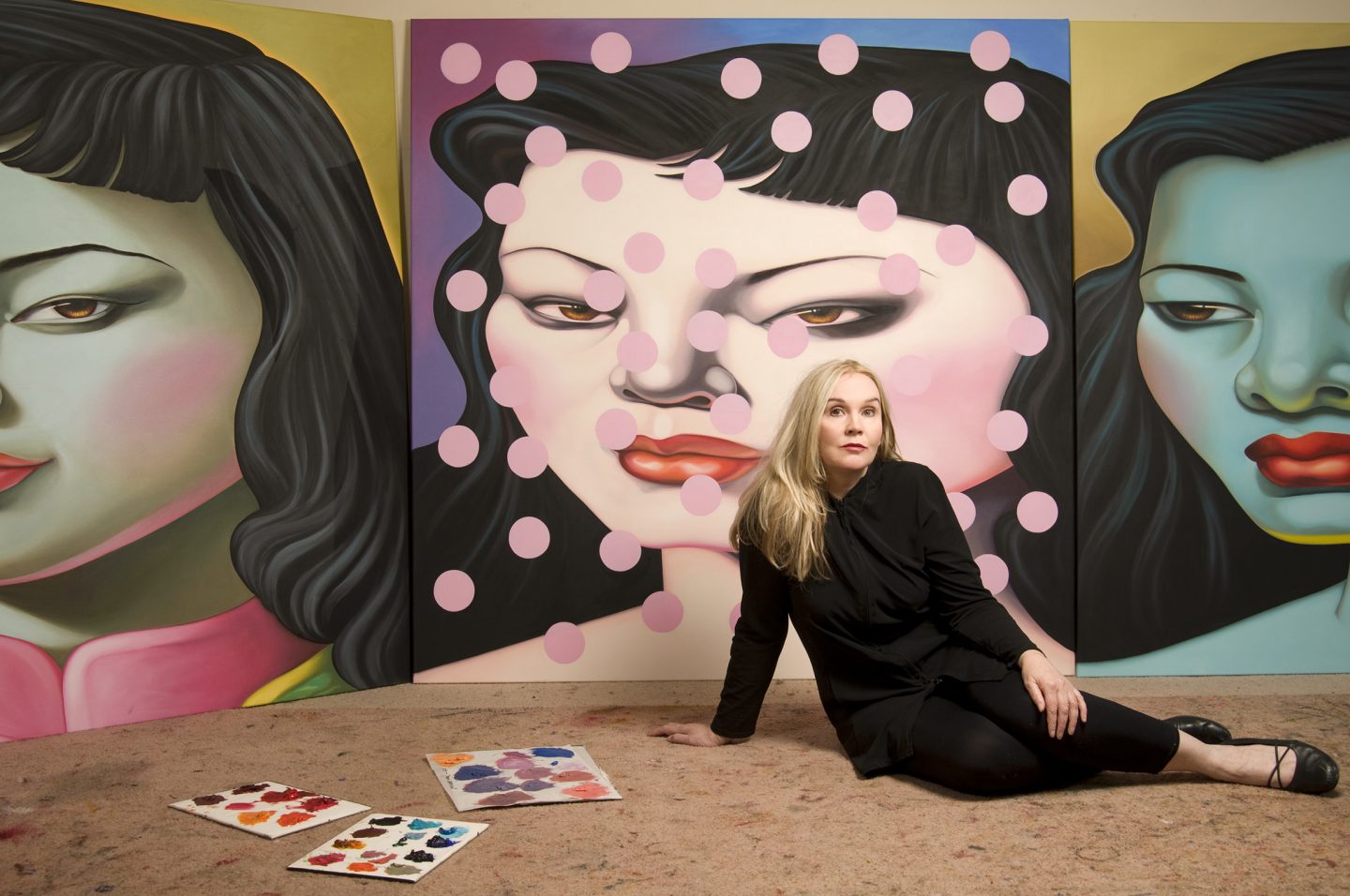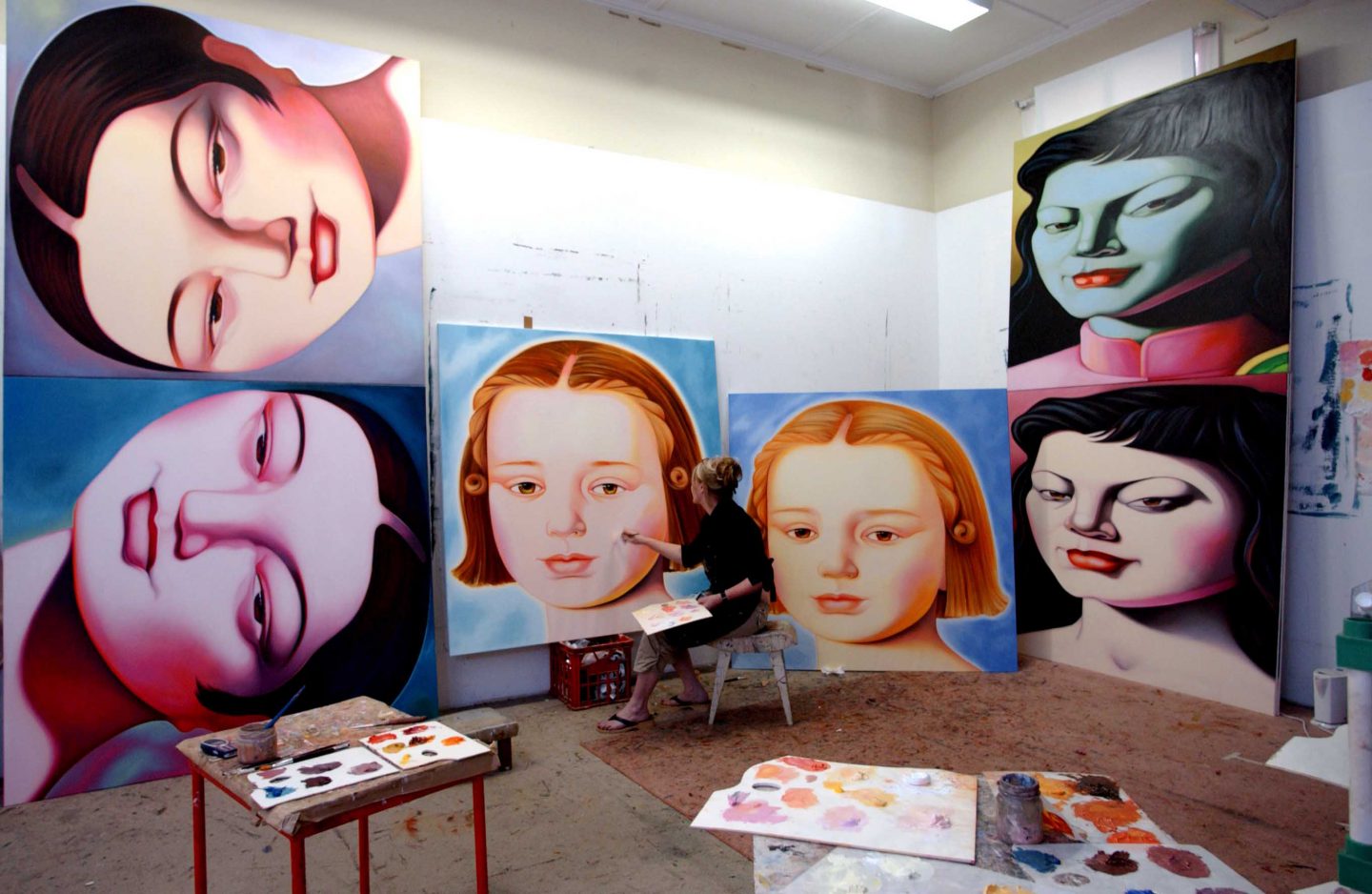Remembering
Annette Bezor,
1950 – 2020

As we mourn the loss of this great artist we reflect on her long, successful career and recognise the contribution she made to contemporary art.
Annette Bezor was one of a kind, noted for her outstanding artistic talent as well as her generous, compassionate nature. Her passing after a long and courageous battle with ovarian cancer will be deeply felt by many fellow artists and friends.
Bezor’s brother Robert Bateman remembers her developing her creative flair at an early age. “Annette loved drawing, especially fashion and dresses. She was into fashion design and left school early to become a hairdresser.”
As fate would have it, the hairdressing chemicals caused dermatitis on Bezor’s hands so she gave it up and enrolled in the South Australian School of Art in 1974. “This was the best thing that ever happened, from then on she shone. She discovered art, she discovered painting and it was her whole life,” says Bateman.
In the mid-1970s the women’s art movement in South Australia was strong and Bezor thrived during this period developing her practice and establishing herself as an artist. After graduating from the South Australian
School of Art in the late 70s, Bezor became one of Australia’s most original and thought-provoking painters, with a number of exhibitions locally, nationally and internationally.
A turning point in her career was when she went to Paris in the late 1980s. This was the start of her love affair with the city, which became a constant influence on and inspiration for her practice. Bezor developed a unique style, which included elements of realism, surrealism, portraiture, pop art and postmodernism, yet her work eluded categorisation.
Chris Reid, a freelance writer and good friend of Bezor’s, says: “She did not subscribe to any school of thought stylistically, and her work frequently challenges the very idea of stylistic categorisation.”

Bezor has been admired for her strong work ethic and commitment to her painting, which no doubt contributed to her success. Rick Martin, a fellow artist and friend of Bezor’s since 1981, states: “Annette had the strongest work ethic of any artist I’ve ever known. She treated every weekday as a work day.”
Reid adds: “I think her greatest achievement was in sustaining a highly thoughtful and creative professional practice over many years. This is never an easy task and few artists achieve it. She was totally committed to her art, actively reconsidering and redeveloping her work throughout her career.”
Bezor established herself not as a feminist artist but rather an artist concerned with the feminine. She was interested in the objectification of the female form and society’s attitudes to women and how they are represented in art and popular culture. She began portraying women from classical painting, contemporary decorative art and popular culture, recreating them as stylised icons to reveal and subvert the power and impact of the originals.
Her career-long interest and exploration in this area garnered much praise and recognition. The director of Hill Smith Gallery, Margo Hill-Smith, says: “Seldom in Australian art history has a female painter been so focused and consistent in her long-term exploration of the ageless question of the portrayal of female beauty and femininity. Bezor’s paintings ask us to question how we see women and women’s roles in both the private and public realm.”
Bezor’s final exhibition, Ricochet, featured three new large- scale works of iconic portraits of female subjects, within which Bezor also included images of herself. In these works she positioned herself as both observer and subject. Reid states: “In her final exhibition, she exhibited paintings that depicted framed paintings, so that what a painting of a woman signifies in our society became the subject for consideration.”
One of the works, Marjorie and Me, includes Tamara de Lempicka’s Portrait de Marjorie Ferry (1932) in the foreground with Bezor’s 2005 Archibald Prize finalist work Still posing after all this time (a self-portrait) in the background. Like Bezor, de Lempicka is well known for her sensual portraits of women, many of whom she encountered during her years living in Paris between the two World Wars.
Bezor will continue to be admired for her skill as an artist. She will be remembered for her generosity and unwavering devotion to her family, friends and animals, bequeathing the bulk of her estate to animal sanctuaries here and interstate.
Hill-Smith says: “She was a person of great heart, compassion and sensitivity with whom I had the privilege to enjoy a relationship both private and professional, and who will remain in my heart through the legacy of her paintings and in the many wonderful memories we shared together.”
Reid suggests: “She should be remembered as a highly original and innovative painter with a distinctive approach to depicting the experience of being a woman.”